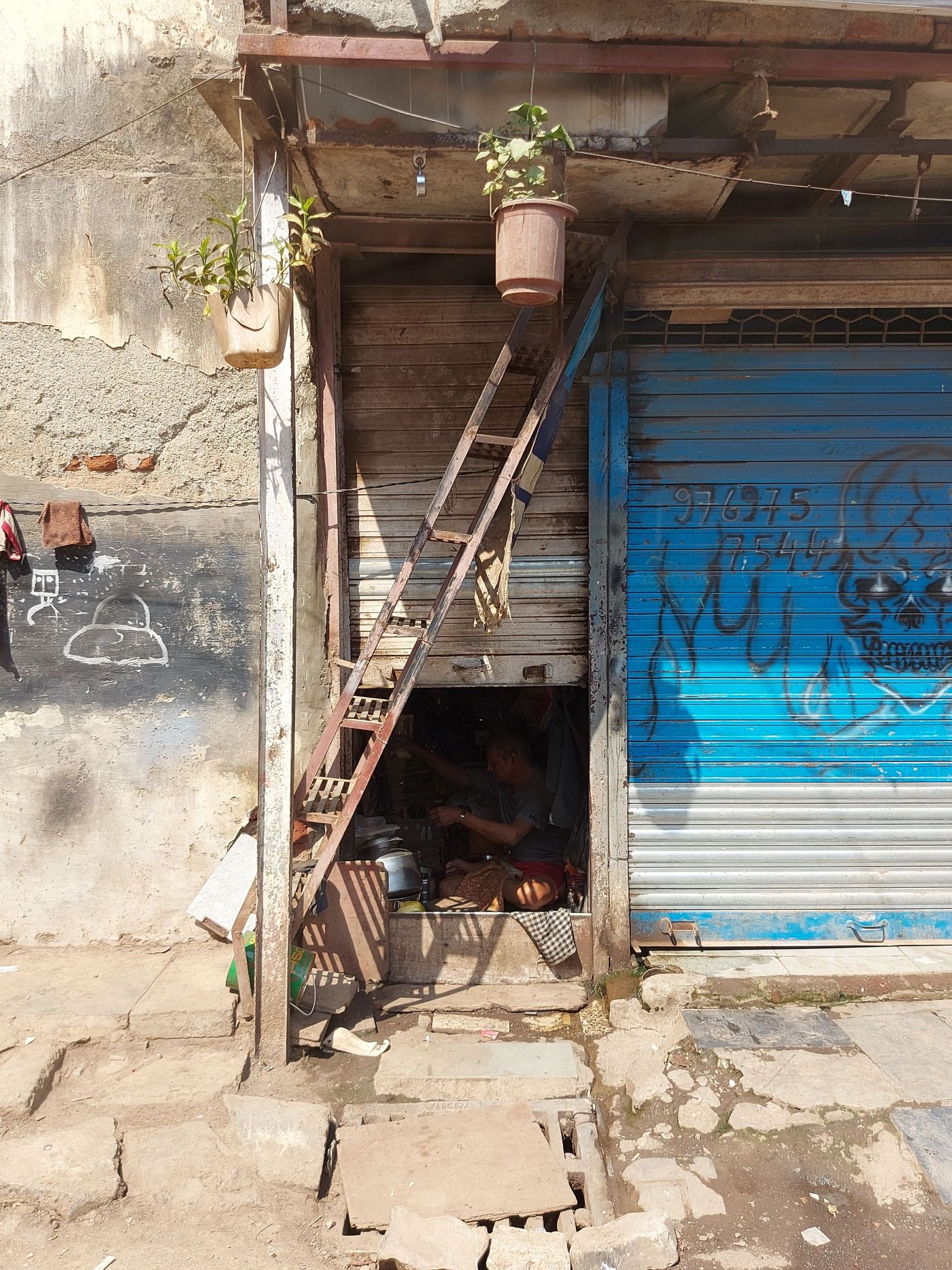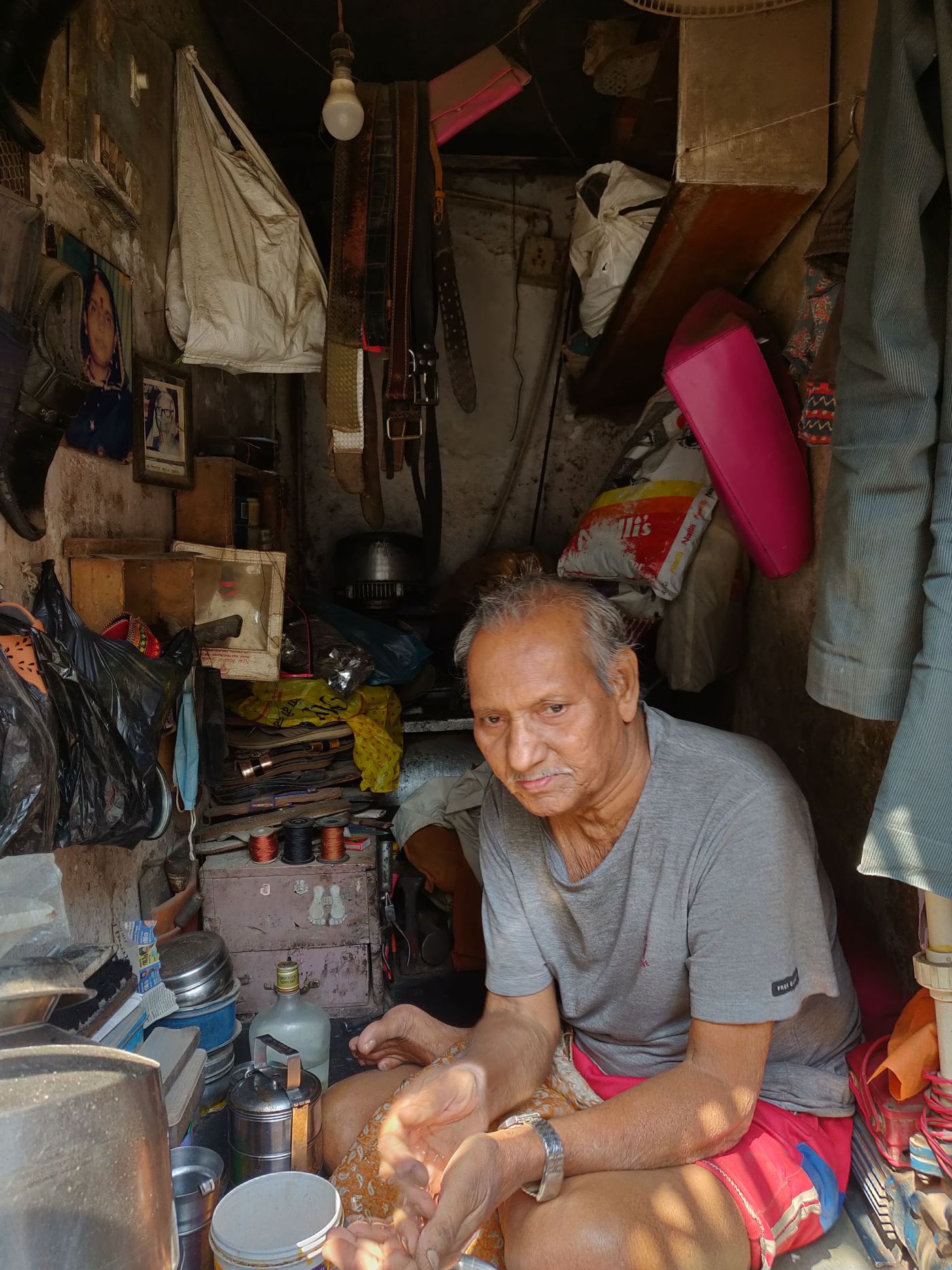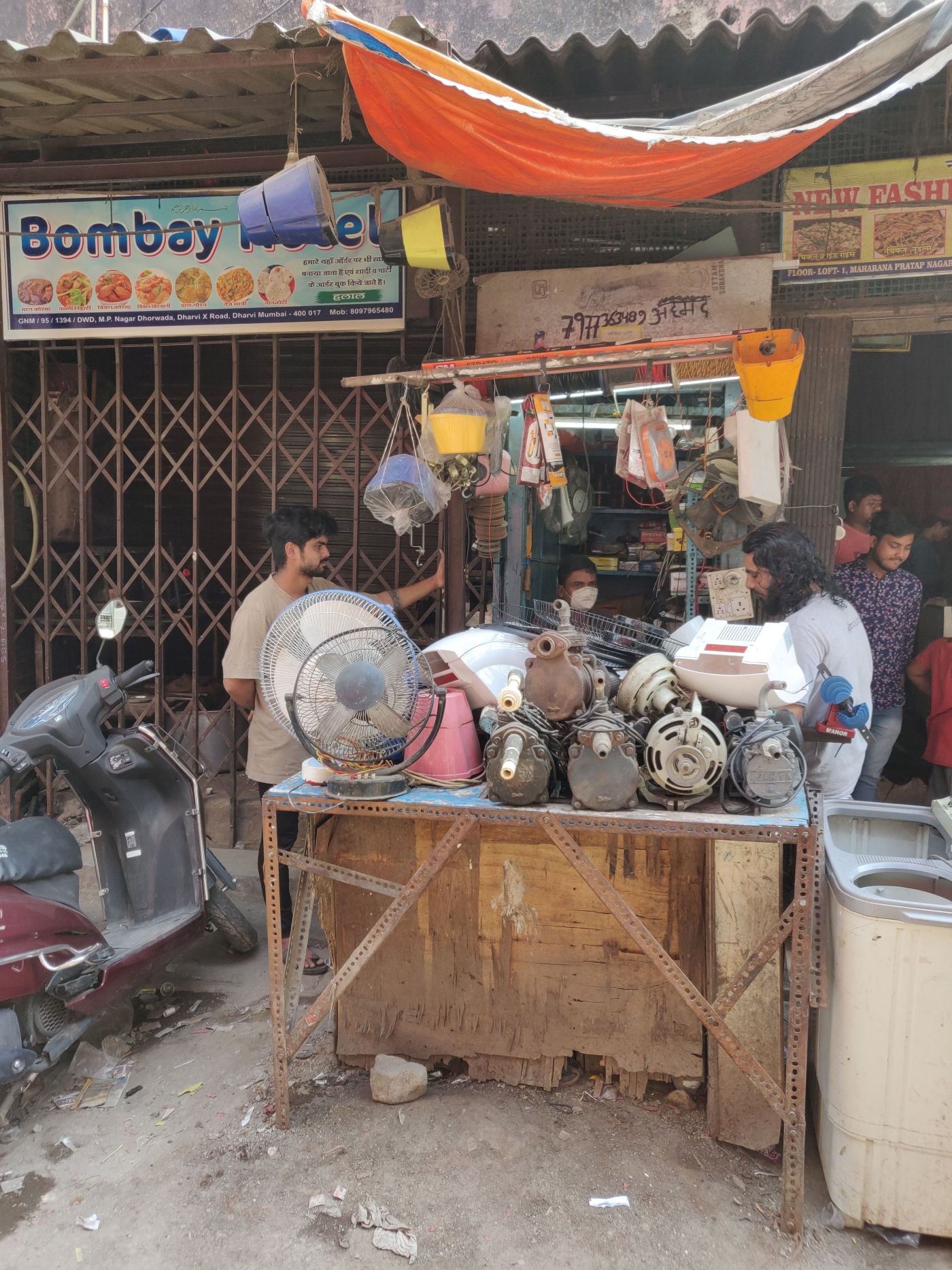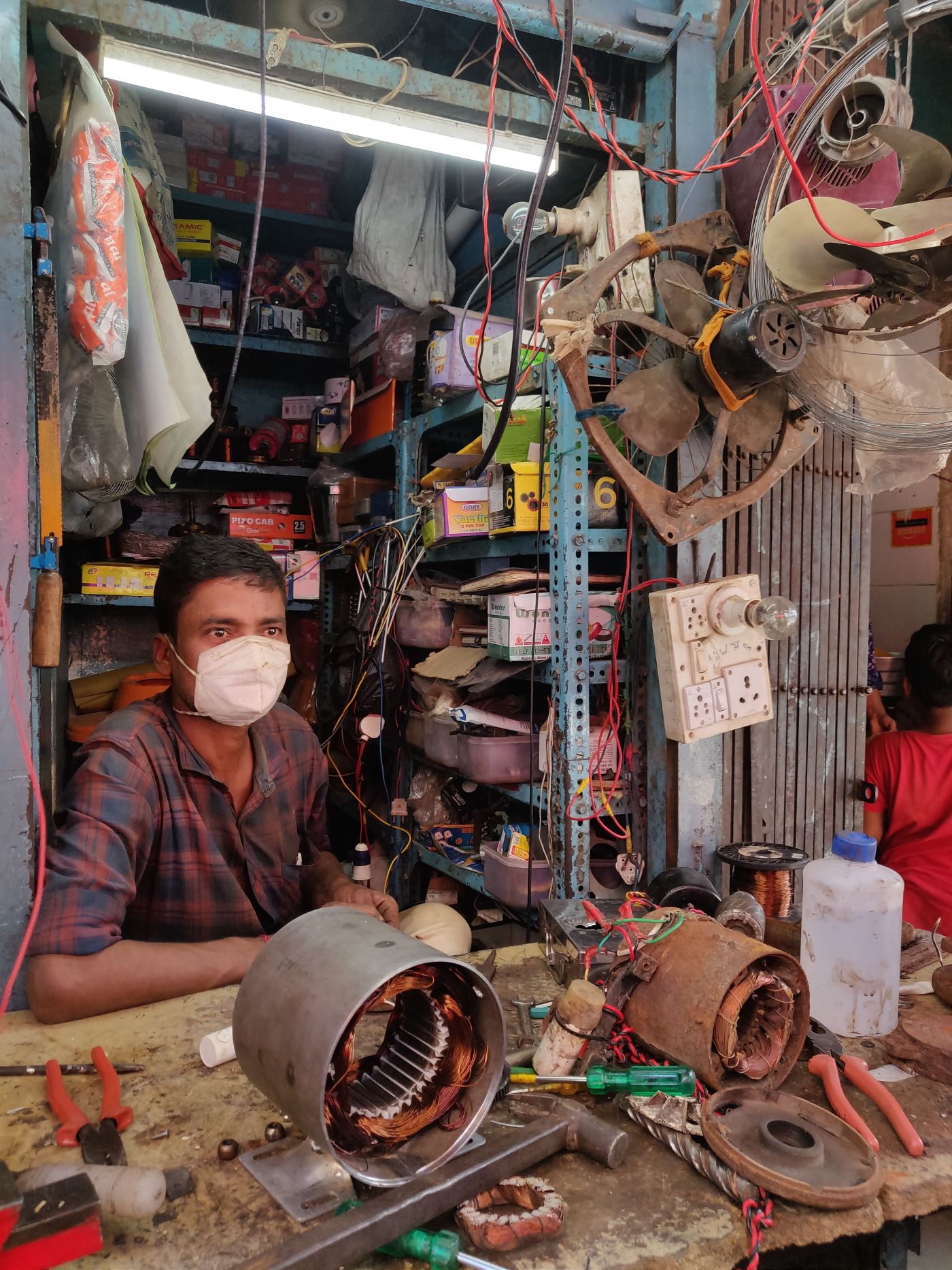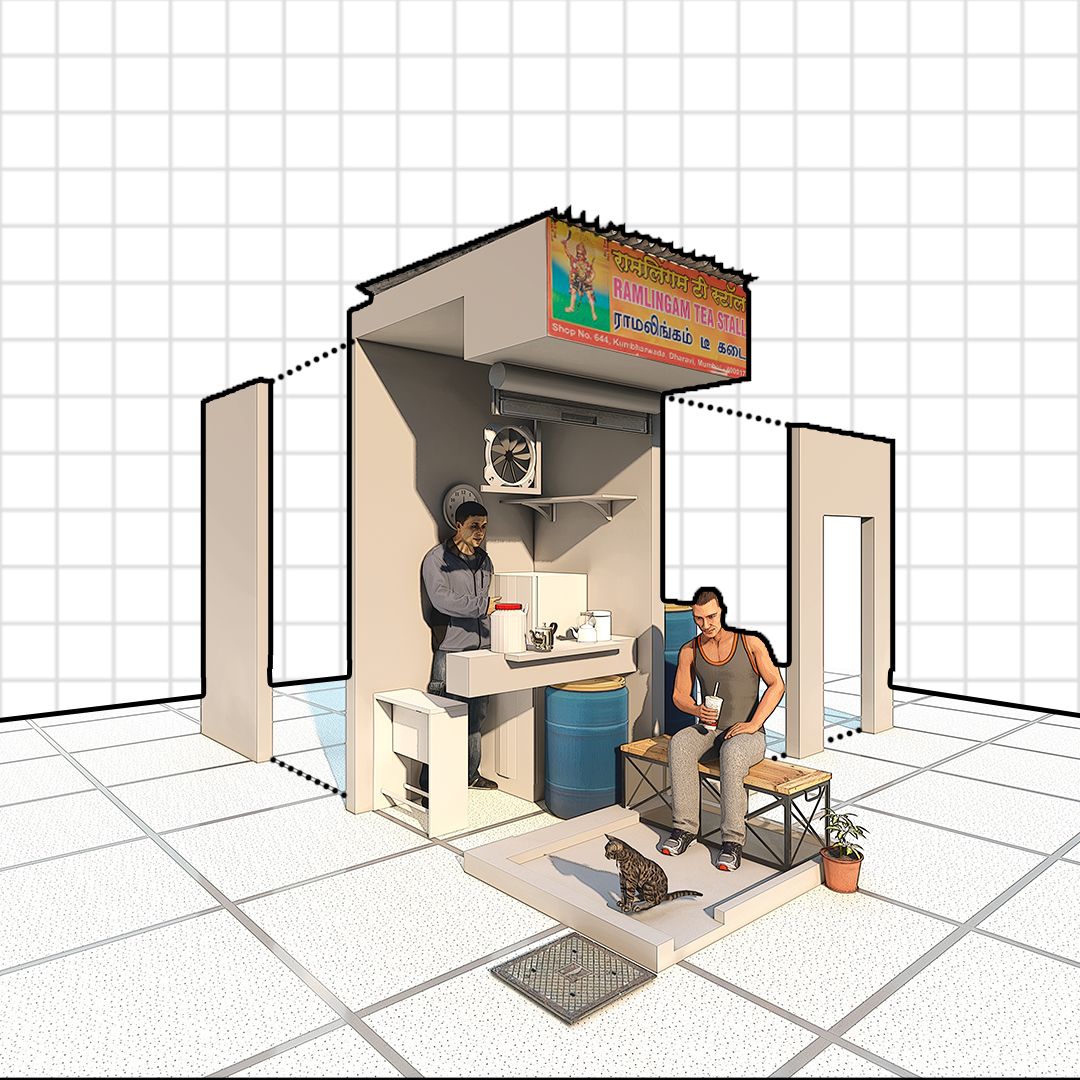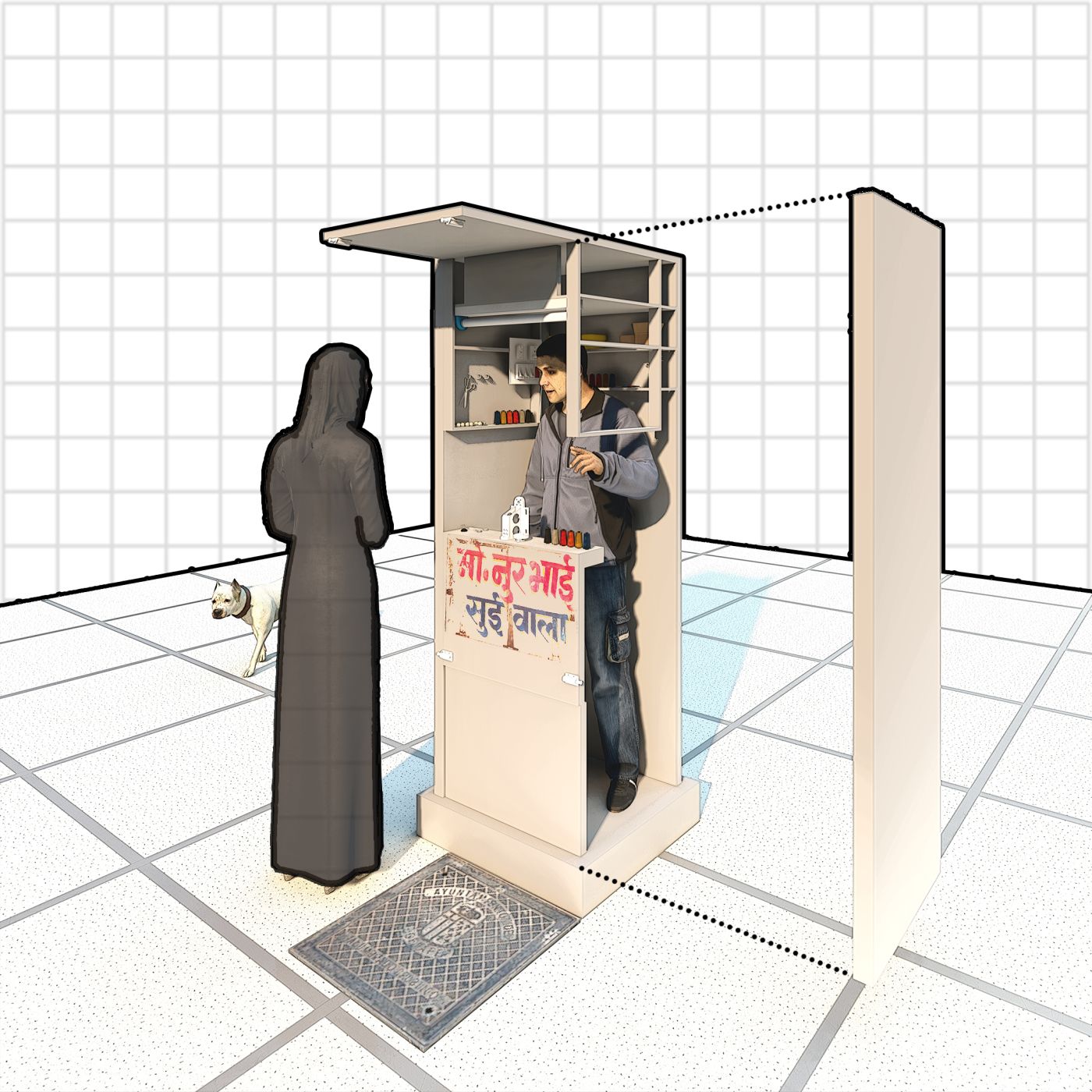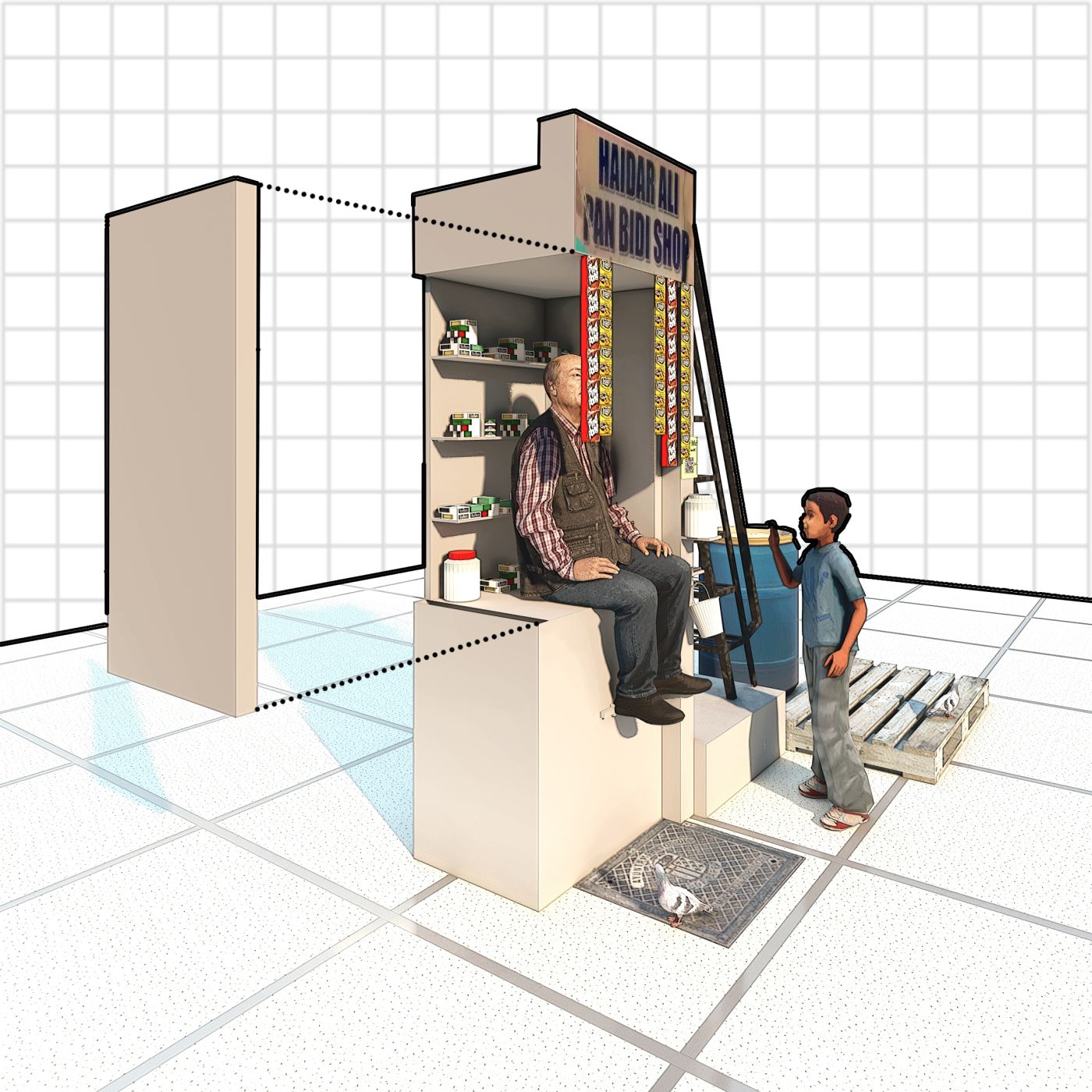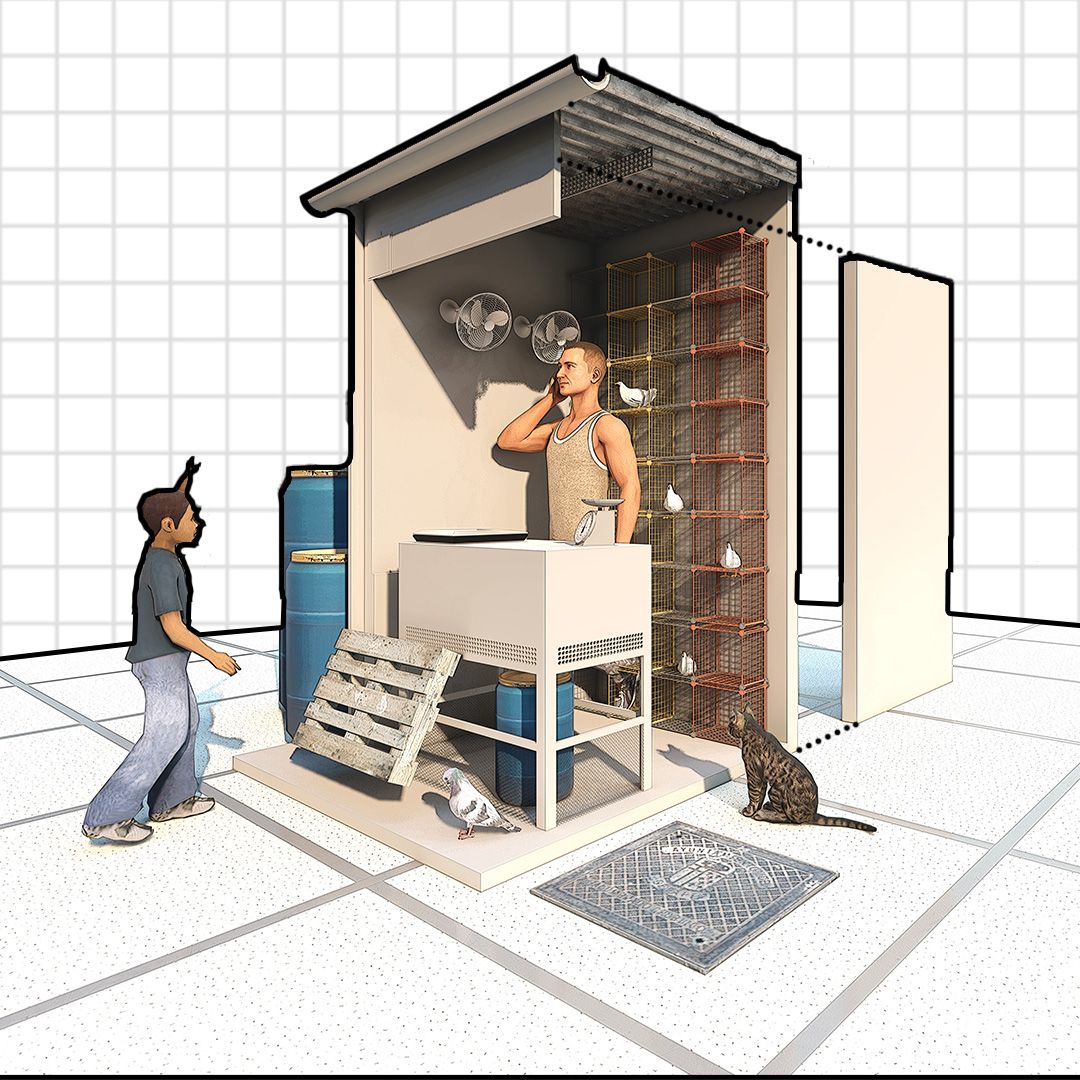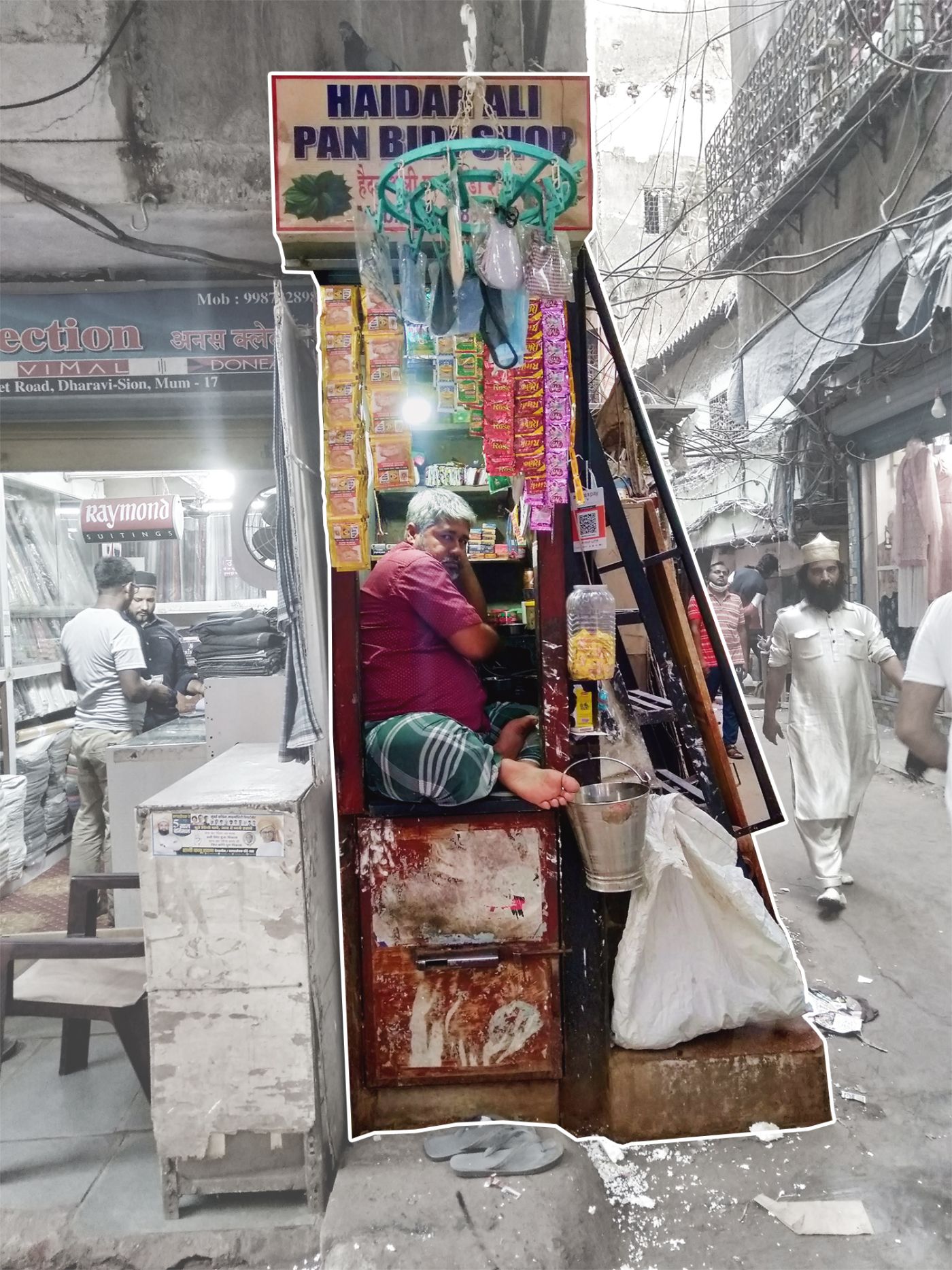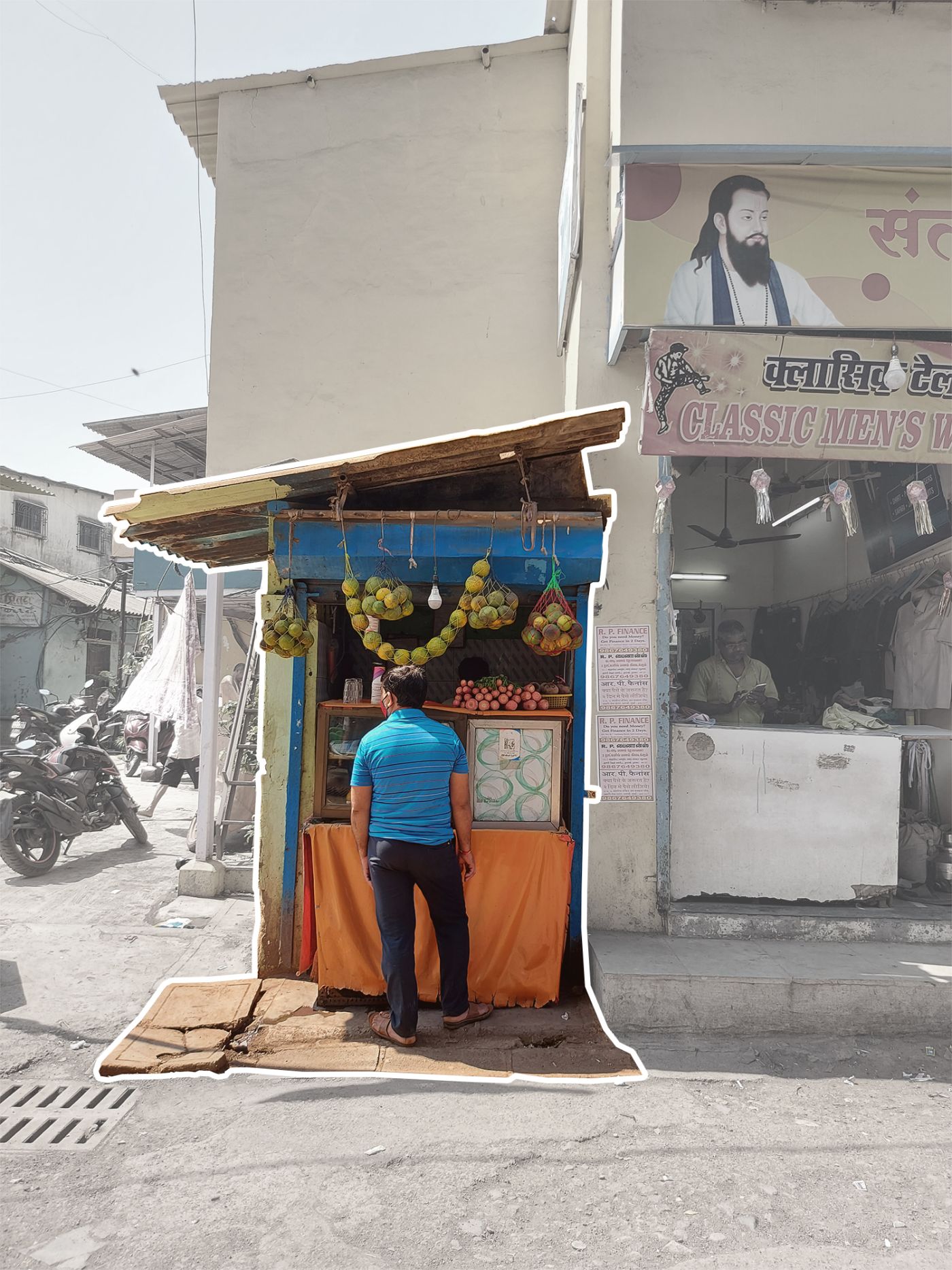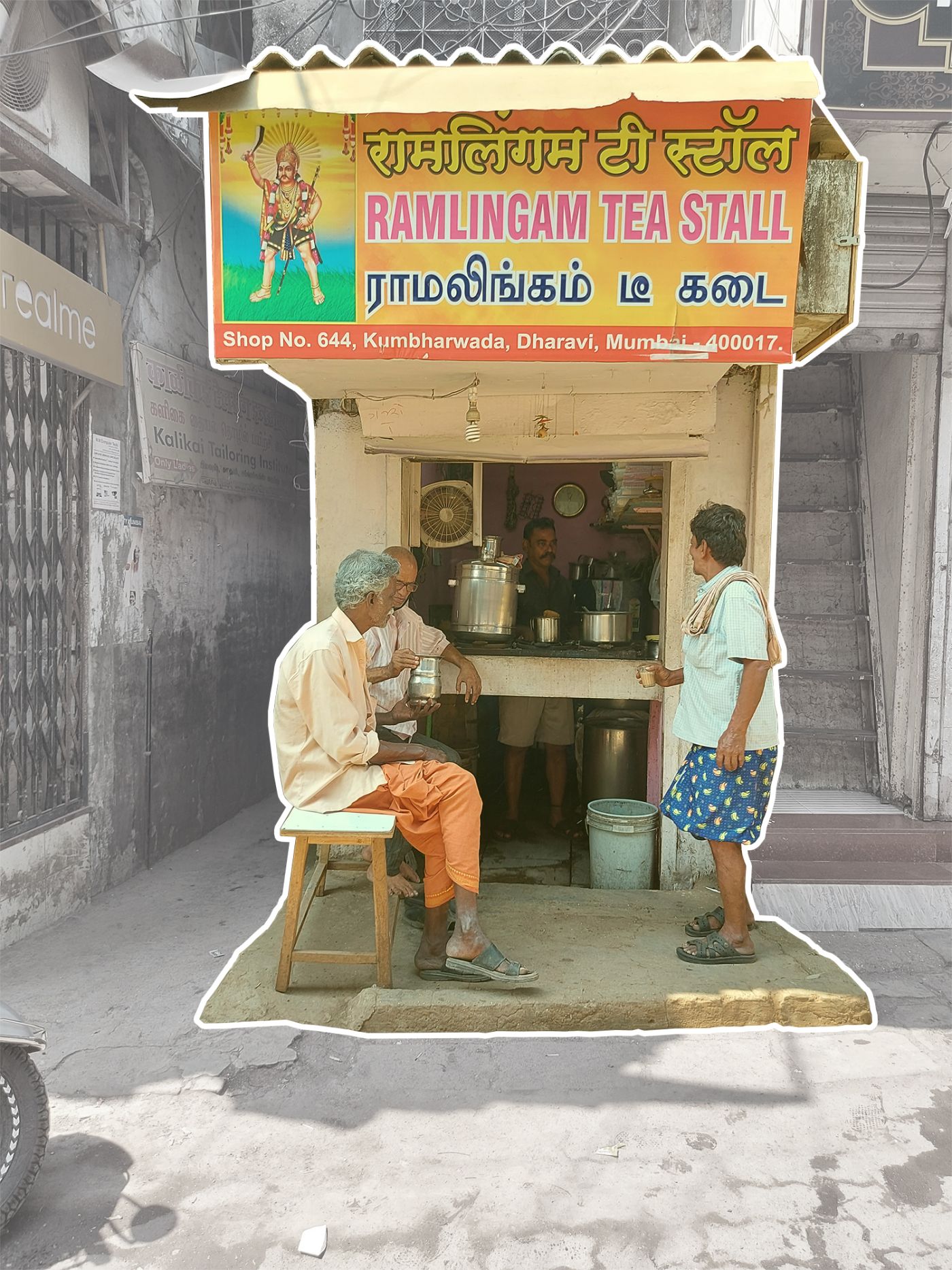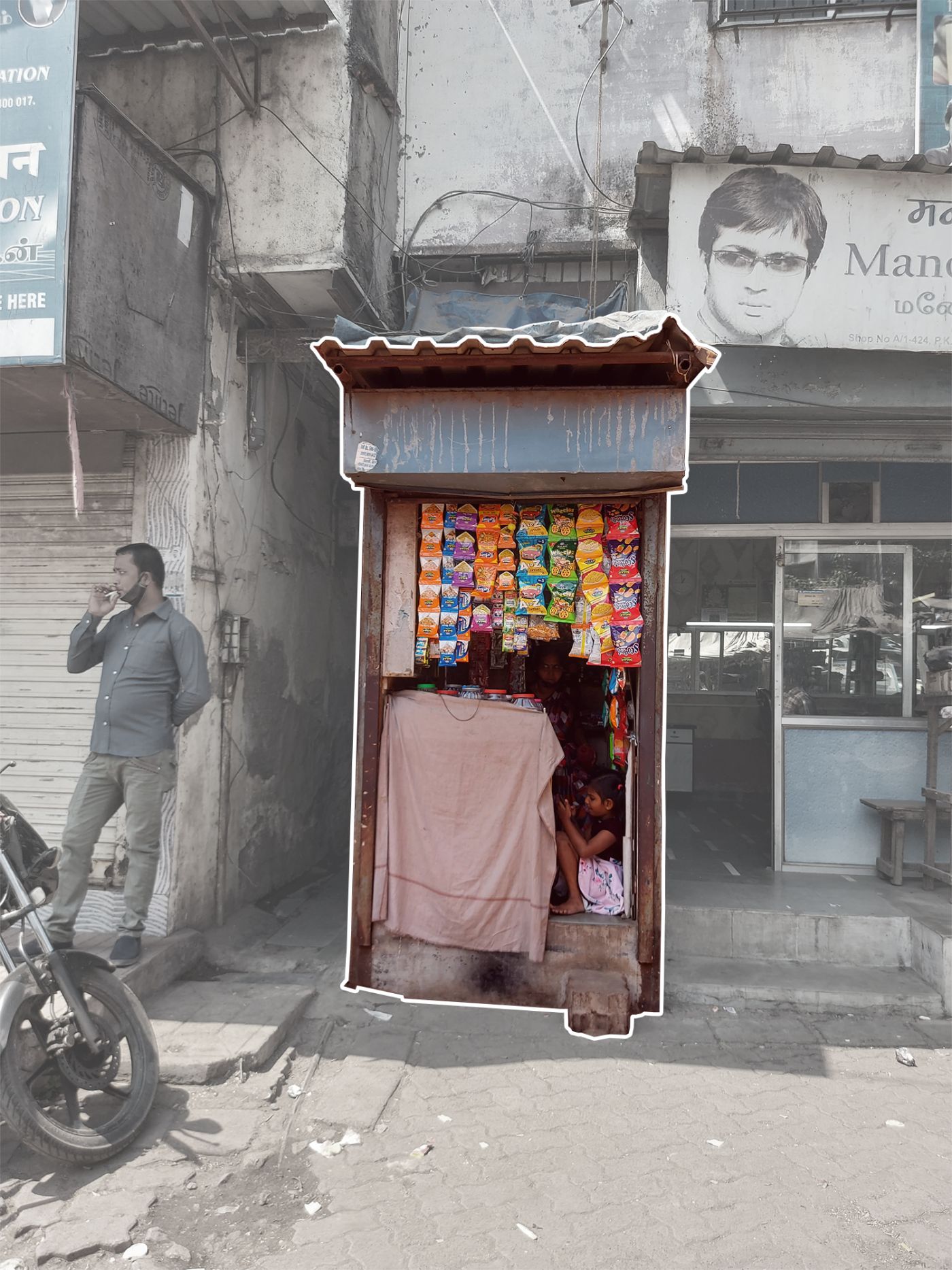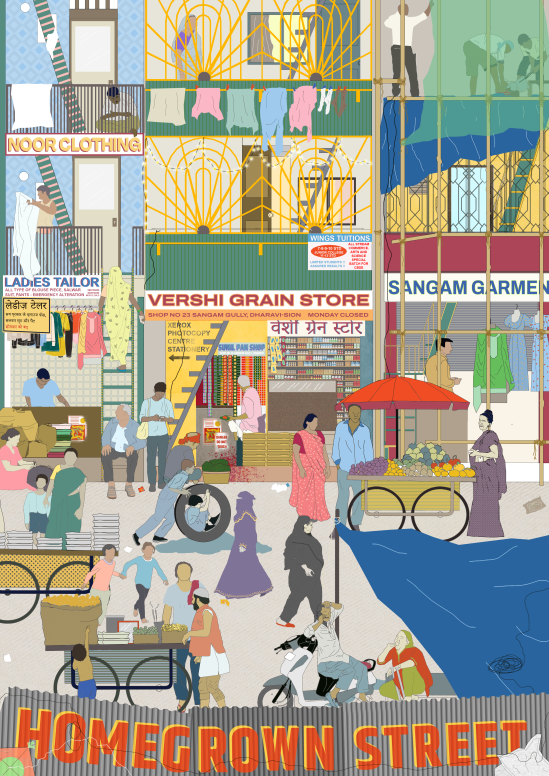3 X 3
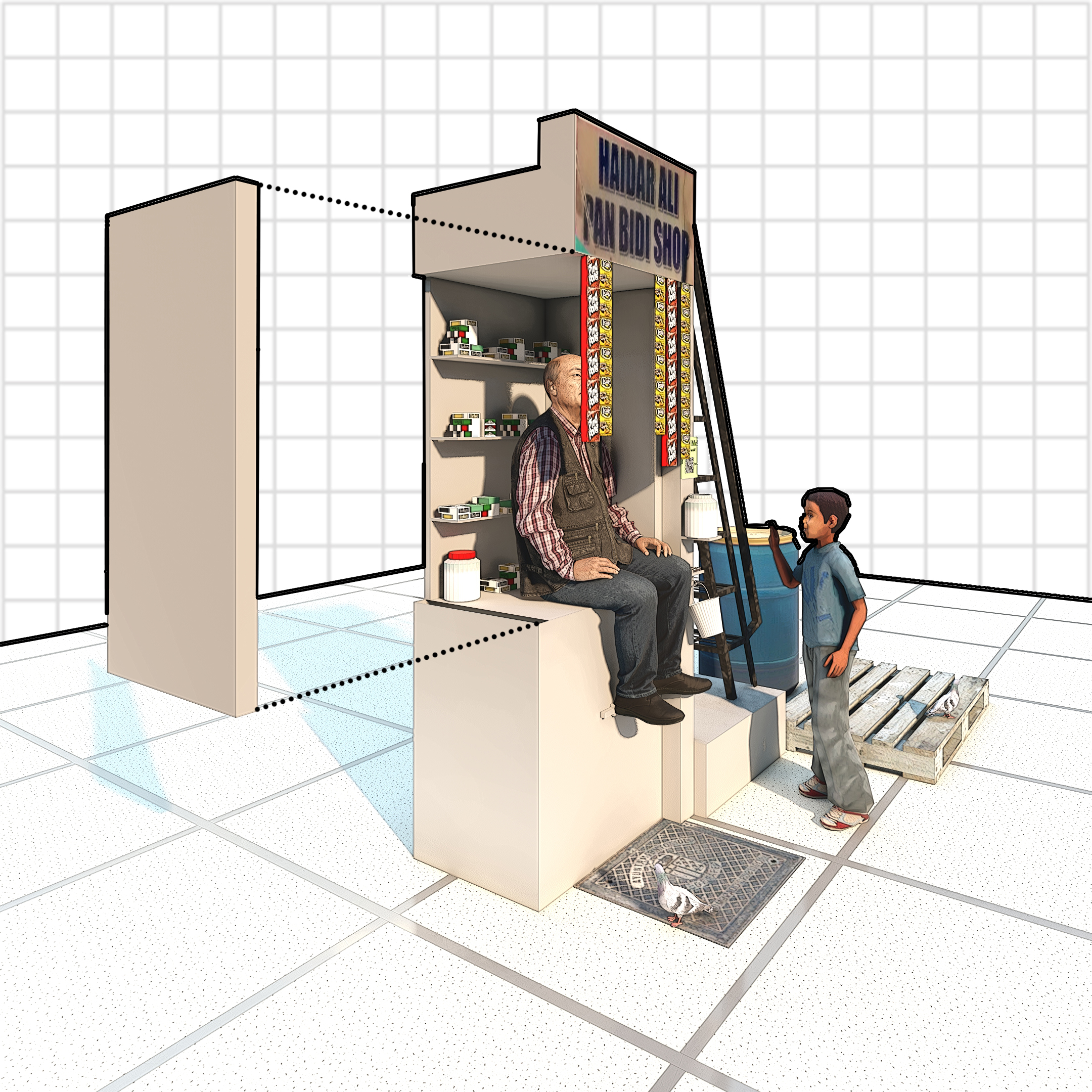
3 X 3
तीन by तीन
Three by Three…
…is the diction commonly used to quantify a 3 feet x 3 feet space in Dharavi. What seems spatially redundant at first glance, is interestingly a commodity to the businesses thriving within Dharavi. Manifold businesses emerge out of a 3x3 feet footprint and cater to the diurnal requirements of the community. These self-taught space-management experts have managed to ‘fit in’ a fully functional tea stall, a grocery store, a chicken coop, a paan shop, a cobbler’s shop, a metal fabrication workshop, an electronics repair shop, and a clinic - all within 9 square feet of space.
An analysis of this typology of shops offers an insight into the diurnal culture of the community. Serving as a reflection of the community’s habits, these pop-up shops showcase what the residents prefer to eat, purchase, and access as a part of their lifestyle. Offering on-the-go, essential items and quick-fix services, these tiny shops establish their relevance in every nook and cranny of the streetscape.
Hanuman bhai is a cobbler who owns a shop on the ground floor of a pucca building. Interestingly, the shop has an unconventionally low mezzanine height making it difficult for a person to stand upright within the space. Hanuman bhai mentions that most of his work is in the sitting position so the low internal height of the shop is not a matter of concern to him. To that end, this spatial setup allows him to generate extra storage space for his goods.
One can locate these businesses on the porch of a building or utilize the residual space under the staircase. One may even find these shops functioning as ground-floor extensions to pucca buildings in the vicinity. Assembled with mild steel sections and aluminium sheets, these shops are fully equipped and act as a ‘kit of parts' needed for a specific activity/business. For example, Ahmed bhai’s 3’x3’ electronics repair shop is fully equipped with a working counter, single-person seating, shelves for storage, a table fan, interior lighting, and electrical connections needed for drilling and welding. During the day, an extra working table is added in front of the shop. Additional helpers assist Ahmed bhai with the repairing tasks and become a part of the extension of the shop. At night, all parts of this extension are contained in the 3x3 space.
While Ahmed bhai’s shop effuses a serious work-oriented character to the street, Ramalingam’s tea stall provides an opportunity to pause and chat in the extension that it creates. Equipped with a sink, shelves, storage, exhaust fan, and a series of stoves, this brick and mortar tea stall adds a distinct character to the street. Here, spatial flexibility exists with respect to the different types of businesses the shop space can support. The existing tea stall may be replaced with a different function, thus enabling the same space to redefine the character it effuses onto the street. Collectively, these 3x3 shops dictate how people move, access services, and generate a distinct street culture.
Interestingly, not all the shops that dot the street are owned by the people who are operating them on a daily basis. A conversation with Noor bhai reveals that he does not own the 3’x3’ space he utilizes. He submits a monthly rent of Rs. 4000 for using the space in front of a building. To justify paying such an exorbitant cost for this space, he mentions that the amount is proportional to the customer footfall on the particular market street. Pointing in the direction of a Masjid and a temple at the far end of the street, he mentions that this context works best for his business as he finds orders throughout the day. Moreover, the residential area surrounding market street ensures that the essential and quick-fix repair service he provides is always in demand. To underline the effect of the densely occupied market street on his business, Noor bhai mentions, “Ither kaam kam nahi padega, matlab bhooka nahi soyega (There will never be a dearth of work/customers, you will not sleep hungry)."
This brings us to an interesting discussion on the pattern of monetizing space by local owners. Apart from adopting the Tool House typology that includes renting a part of the building for commercial activities, building owners even tend to extract income from these small-shop setups that surround the building. Building owners, local authority officials, and the 3’x3’ shop businesses are all an essential part of this complex and interdependent economic system. Although they may appear insignificant, these 3’x3’ shops are an active source of income for the ongoing business and a passive source of income for many. This distinctly explains the reason for the well-rootedness of these pop-up shops on the streetscape.
3x3 has become a colloquial term for defining a compact space in Dharavi. To that end, even shops slightly bigger than 3 feet x 3 feet, are commonly referred to as “3x3 in jagah”. As a part of the ‘Homegrown Street Project’, we also seek to demonstrate the untapped potential of minuscule but significant commercial spaces within Dharavi. These homegrown businesses observed in Dharavi become an interesting study as they offer efficient solutions to some of the most urgent concerns of space optimization in urban contexts. 3’x3’ shops redefine functionality and efficiency by showcasing how businesses can fruitfully integrate with the culture of the community.

